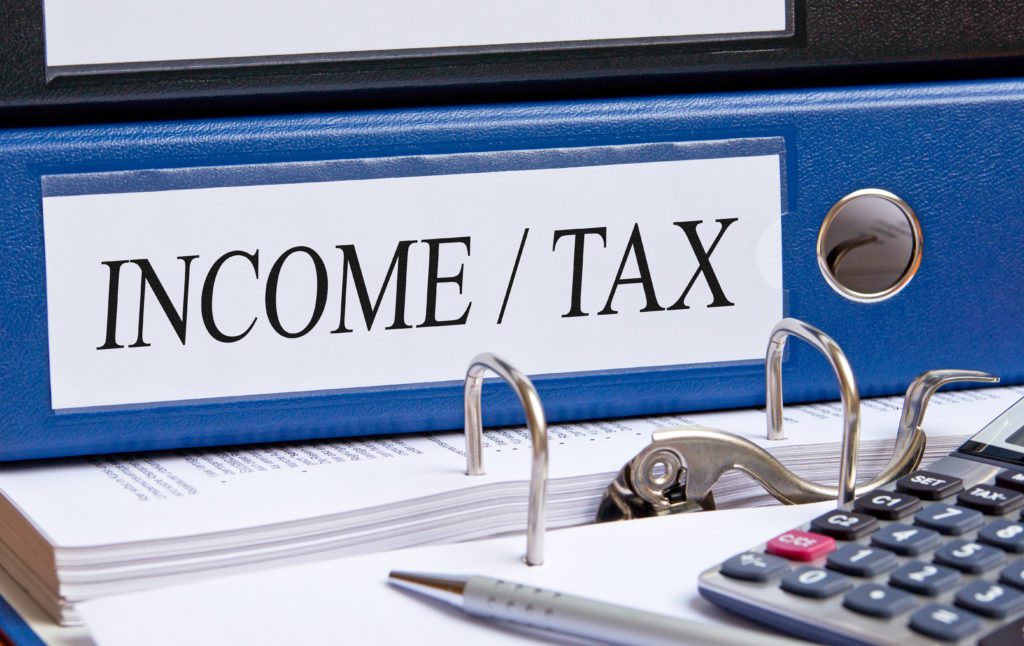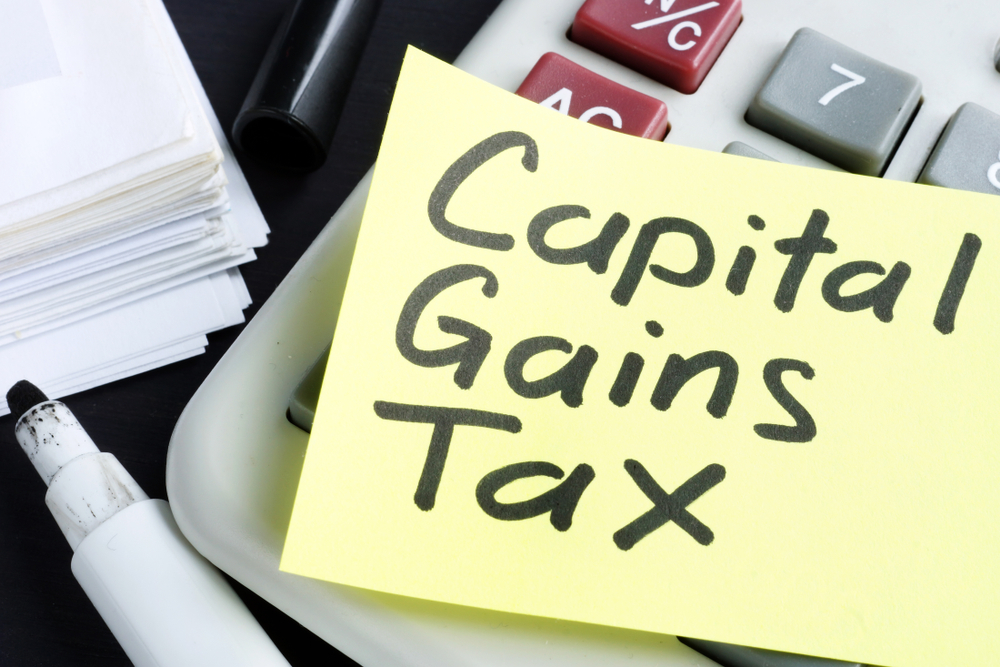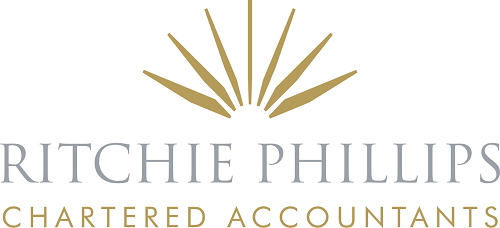As we approach the end of the tax year, it’s an important time to consider any tax planning that may be appropriate, not just to ensure you pay the correct amount but also as a means of increasing disposable income or accumulating wealth.
This in turn ensures you have enough funds to meet your individual and business needs, that any investments or transactions meet your risk profile, and maintains your financial flexibility (particularly liquidity to deal with unexpected events). With this in mind, in the next two posts, we’ll be highlighting some of the areas which you may wish to consider, starting in this post, with tax planning for private clients and private wealth.
Income Tax Planning

Your marginal income tax rate
There are a number of tax thresholds that can make a real difference to your tax liability each year. They are:
a) Tax free income of up to £12,570
Every individual can have tax free income up to the personal allowance of £12,570 in 2022/23. If this allowance has not been used, consider transferring or splitting ownership of income producing assets or putting savings in joint names. Alternatively, if your business could justify the payment of a salary to your spouse or civil partner or your children, that too would use up the personal allowance.
b) Effective tax rate of 15% on income of £50,270
Every individual also has a basic rate band of £37,700 in 2022/23 where income is taxed at 20%. When combined with the personal allowance, your tax liability is £7,540 on the receipt of £50,270 of income, which is a relatively low marginal tax rate of 15%.
c) The marginal 60% income tax rate
For those individuals with incomes over £100,000, the personal allowance is progressively withdrawn by £1 for every £2 of income. This results in an effective 60% marginal income tax rate on incomes between £100,000 and £125,140.
If your income is in this range, you should consider taking action to reduce your taxable income such as making in year pension contributions or Gift Aid donations, or investing in tax efficient investments under EIS, SEIS or VCT.
Alternatively, you may be able to either advance or defer the receipt of income to earlier or subsequent tax years so that you have no or little income in this income range.
Freezing of the personal allowance and the basic rate tax band
At the Autumn Statement, it was announced that the income tax personal allowance and the 40% higher rate threshold would be frozen until 5 April 2028, instead of increasing each year in line with inflation.
As earnings increase, this will result in more individuals becoming higher rate taxpayers. This is often referred to as ‘fiscal drag’ because it will raise more income tax without actually increasing income tax rates.
More to pay 45% income tax
Also at the Autumn Statement, it was announced that the income level at which point the 45% additional rate of income tax starts to apply will be reduced from £150,000 to £125,140 with effect from 6 April 2023.
The new £125,140 threshold ties in with the £12,570 personal allowance being gradually withdrawn for those with income in excess of £100,000. For these individuals, once their income exceeds £125,140, they will no longer be entitled to a personal allowance and, from April 2023, will move straight into 45% income tax.
The tax year 2021/22 will therefore be the last year individuals will pay 40% income tax on income over £100,000. It is therefore the last opportunity to pay income tax at the lower level albeit the additional expense is £1,243 per annum or £104 each month.
For all individuals, the first £2,000 of dividend income is taxed at 0%.
Dividend income – reduced 0% band
The government have now decided that this ‘dividend allowance’ of £2,000 will be reduced to £1,000 in the 2023/24 tax year and then again to just £500 in the 2024/25 tax year.
Where your company is able to pay a dividend of £2,000 or more to its individual shareholders, consideration should be given to paying such a dividend on or before 5 April 2023.
Tax on dividends
The government has also confirmed that, from April 2023, the rates of taxation on dividend income will remain as follows:
- the dividend ordinary rate – 8.75%
- the dividend upper rate – 33.75%
- the dividend additional rate – 39.35%.
As corporation tax due on directors’ overdrawn loan accounts is paid at the dividend upper rate, this will also remain at 33.75%.
Again if significant dividends are being contemplated, consideration should be given to paying such dividends on or before 5 April 2023.
Gift Aid for Charity Donations

Gift Aid remains one of the most effective ways to give money to charity and at the same time to get a tax deduction for the amount given at your marginal rate of tax.
This is therefore a valuable relief for gifts to charities: the gift is made out of the donor’s taxed income and the charity benefits by claiming basic rate tax on the value of the gift. Higher rate taxpayers can claim 20% and additional rate taxpayers 25% in extra tax relief.
For example, on an £800 donation to charity, the grossed up gift is £1,000 as the charity can claim back the basic rate tax of £200. As a higher rate taxpayer, you can claim back a further £200 making the net cost to you £600. If you are an additional rate taxpayer, you can claim back £250 making the net cost to you £550.
There is no cap on the amount which can qualify for Gift Aid relief, provided the donor has paid sufficient tax during the tax year to cover the charity’s reclaim from HMRC.
Gift Aid donations can be carried back and treated as if they were made in the previous tax year. This can be helpful where you were a higher or additional rate taxpayer and want to reduce your tax liability in the previous tax year or restore your entitlement to personal allowances.
Alternatively, you may wish to carry back a donation if you did not pay enough tax in a tax year but you did in the previous year. When you are completing your Self-Assessment tax return for a year, you can only elect to carry back contributions to that year, and not from it. The election must be made in your original tax return for the year to which you are carrying back the contributions, and before the normal Self-Assessment filing date for that year.
Gifts of Assets to Charity – the Alternative to Gift Aid

Gifts of assets in specie to charity are generally more tax efficient than cash gifts under Gift Aid, particularly where the assets are standing at a gain over their original cost.
Income tax relief is available on the market value of the asset gifted to charity against your total income. In addition, the asset is deemed to be sold at no gain or no loss such that there is no capital gains tax liability.
Only specific types of asset qualify for this tax relief:
- Shares or securities that are listed on a recognised stock exchange or dealt in on any designated market in the UK
- Units in an authorised unit trust
- Shares in an open-ended investment company
- An interest in an offshore fund
- A qualifying interest in land, broadly a freehold or leasehold interest (or its Scottish equivalent) in UK land.
Notable absences are unquoted shares, crypto assets and any kind of chattels.
Two points to bear in mind in the gifting of assets. Firstly, unlike the gifting of a monetary donation, it is not possible to elect to “carry back” income tax relief for the gift of a qualifying investment.
Secondly, if the qualifying investment is standing as a loss for CGT purposes, it would not be advantageous to gift it to charity as no loss would be recognised. It would be advisable in this case, to dispose of the asset in the normal way, crystallising the loss for use against other or subsequent gains. The proceeds may then be gifted under the usual Gift Aid rules.
Capital Gains Tax Planning

Annual exemptions
Each individual has an annual exemption from capital gains tax which cannot be carried forward. For 2022/23, this is £12,300 and has to be utilised on or before 5 April 2023.
Selling investments, such as shares or unit trusts, standing at a gain may use this annual exemption. If you wish to retain your investment, you could sell it to your ISA, or your spouse or civil partner could buy back that investment in their name.
Selling your investment and purchasing a similar investment is an option. Also, repurchasing an asset after more than thirty days have elapsed is a possibility.
Cut to the CGT annual exemption
In the Autumn Statement, the Chancellor announced that the current £12,300 annual tax-free CGT exemption (or allowance) will be reduced to just £6,000 in 2023/24 and only £3,000 in 2024/25.
If you have the opportunity to realise capital gains of over £6,000 in the current tax year, you should give consideration to utilising the current increased CGT annual exemption.
Rates of CGT
Capital gains in excess of the annual exemption of £12,300 are taxed as follows:
- 10% for basic rate taxpayers
- 20% for higher and additional rate taxpayers.
For gains from residential property and private equity, the 10% rate becomes 18% and the 20% rate becomes 28%.
The CGT rate on business assets qualifying for Business Asset Disposal Relief is 10% on gains up to the lifetime limit of £1million for disposals from 11 March 2020. The CGT rate is also 10% on assets qualifying for Investor Relief with a lifetime limit of £10 million of gains per person, although it is thought less than 100 taxpayers are claiming this relief each year.
Spouses and civil partners
Transfers of assets between married couples or civil partners are treated for tax purposes as occurring at a value which produces neither a gain nor a loss such that the donee inherits the donor’s base cost for capital gains tax.
If assets standing at a capital gain are transferred to your spouse or civil partner and are then sold, they should be able to use their annual exemption or brought forward capital losses against the gain realised.
Gifts and transfers to Trust
Gifts to your children (and anyone else whom you wish to benefit) and transfers to Trust will realise a capital gain as the asset will be deemed to have been sold for open market value.
Consideration will need to be given to whether the capital gain can be held over to the recipient of the gift. In relation to gifts to Trust, consideration will also have to be given to the Inheritance Tax consequences of the transfer.
Realising capital losses
If you have already realised capital gains this year in excess of the annual exemption, now is the time to consider realising any assets standing at a capital loss.
If your investments are held by more than one investment manager or you have personal holdings too, you will need to consider the overall position and not just let each investment manager consider their portfolio in isolation.
Negligible value claims
An asset you still own may have become worthless and, if so, you can claim the capital loss arising for capital gains tax purposes. If the asset comprises shares in an unquoted company with a UK trading business, it may be possible to offset the loss against your income.
If you claimed Enterprise Investment Scheme (EIS) income tax relief when you subscribed for the shares and that relief has not subsequently been withdrawn, the shares are treated as being in a qualifying trading company. Otherwise, the company must satisfy a number of conditions depending on when the shares were issued. Notably, the company’s trade must:
- Not be wholly or mainly dealing in land, in commodities or futures, or in shares, securities or other financial instruments
- Be a qualifying trade for the purposes of EIS
- Be pursued on a commercial basis.
In addition, if the shares were issued after 5 April 1998, the company must meet the “gross assets rule” as follows:
- 6 April 1998 to 5 April 2006, gross assets must not exceed £15 million immediately before, and £16 million immediately after, the share issue
- After 5 April 2006, gross assets must not exceed £7 million immediately before, and £8 million immediately after, the share issue.
The claim can be backdated by up to two years, so the time limit for making a claim for an asset that became worthless in 2021/22 will be 31 January 2024. The claim can also be made for losses to be recognised in the current year.
Payment date
Capital gains tax is payable on 31 January following the end of the tax year in which the disposal took place, other than for UK residential property. By delaying a sale until after 5 April, you give yourself an extra twelve months before the capital gains tax has to be paid. Consideration will have to be given to the likelihood of increased capital gains tax rates applying in future tax years.
For UK residential property, the capital gains return and the payment of the tax due have to be made to HMRC within 60 days of the completion of a sale. This tight timescale can be problematic with the potential need to research historic records and obtaining valuation advice.
Investing for capital growth
There remains a significant difference between the additional rate of income tax of 45% and the normal top rate of capital gains tax of 20%. Placing an emphasis on investing for capital gains rather than income can help minimise your tax liability, subject always to the differential in tax rates being maintained.
Liquidations
Distributions made during a liquidation will be treated as capital proceeds and charged to capital gains tax. This will involve a formal liquidation and the appointment of an insolvency practitioner, but where assets of the business are below £25,000, an informal process can be followed.
The main benefit of distributing the company’s assets through a formal liquidation is that any funds are paid as a capital distribution, as opposed to income, and attract capital gains tax. Accordingly, where shareholders are mostly individuals and there are over £25,000 of assets to distribute, it is generally worth proceeding with the formal route of liquidation. Otherwise the distribution will be charged to income tax at the dividend tax rates.
The favourable capital gains tax treatment of the distribution is subject to certain anti- avoidance legislation. In broad terms, the anti-avoidance legislation has the effect of catching individuals who have successive companies or businesses carrying on the same or similar activity.
Land and Property

Joint property ownership
Where spouses or civil partners own assets (other than close company shares and furnished holiday lets) jointly, for tax purposes the income in the first instance is deemed to be split 50:50 regardless of the beneficial or legal ownership. Where the 50:50 split does not reflect reality, a declaration can be made so the spouses or civil partners are taxed in accordance with the ratio of actual ownership. Where a 50:50 split is not beneficial it is important that the declaration is made in a timely manner.
CGT UK property returns
Where a UK resident individual, trustee or personal representative or partner in a partnership disposes of UK residential property and capital gains tax is due, a CGT UK property return must be filed, together with a payment on account of capital gains tax, within 60 days of the date of completion of the transaction.
Non UK residents are required to report not just disposals of residential property, but all disposals of UK land whether or not they realise a gain including indirect disposals such as the sale of shares in property rich companies. A company is property rich if 75% or more of its gross asset value derives from UK property.
For those meeting the requirements of Self-Assessment, the property disposal will also need to be reported on their personal tax return.
Inheritance Tax Planning

Introduction
The key to successful estate planning is to first make sure that arrangements are in place so that your wishes for your estate are properly carried out and secondly that opportunities are taken to reduce the inheritance tax liability.
Inheritance tax planning is therefore considered on a long term basis – both in the context of lifetime giving and the arrangements to be made in your Will.
If you gift assets, rather than cash, then capital gains tax may be an issue. And of course, when gifting any assets, you should always contemplate the impact on your financial position so that your lifestyle is not adversely affected.
Basic planning
There is some straightforward planning all individuals should consider:
- Using the annual gifts exemption of up to £3,000 in a tax year. If you made no gifts in 2021/22, then the exemption for that year is carried forward meaning that you can make gifts of up to £6,000 on or before 5 April 2023 free of inheritance tax
- Using the small gifts allowance of up to £250 per donee
- In the case of marriage, gifts of £5,000 to children, £2,500 to grandchildren and great grandchildren, and £1,000 to anyone else are also exempt.
Normal expenditure out of income
Regular gifts out of excess income can also be exempt from inheritance tax as normal expenditure out of income. You will need good documentation to prove that you made the gifts out of excess income rather than from capital. Importantly, there is no limit to the amount of relief that can be claimed either in lifetime or on death. If you have excess income, it can therefore be used to fund a discretionary trust with no lifetime change to inheritance tax being payable.
More substantial gifts
Gifting assets or cash during your lifetime will, provided you do not reserve a benefit, fall outside of your inheritance tax estate if you survive seven years, and potentially the amount of inheritance tax payable will reduce under taper relief if you survive more than three years.
The nil rate band
Many estates are now subject to inheritance tax, which is payable if your estate for inheritance tax exceeds the present nil rate band of £325,000, which is frozen at this level until the end of 2025/26.
Transferable nil rate bands
The estate of a surviving spouse or civil partner could benefit from the proportion of the unused nil rate band on the earlier death of their spouse or civil partner, meaning a combined nil rate band of up to £650,000 can be available on the death of the survivor.
Residence nil rate band
Where a residence is passed on death to direct descendants such as children or grandchildren, an additional nil rate band of £175,000 is available but is similarly frozen to 2025/26.
The residence nil rate band can only be used in respect of one residential property which has, at some point, been a residence of the deceased. There is a tapered withdrawal of the residence nil rate band for estates with a net value (after deducting any liabilities but before reliefs and exemptions) of more than £2 million.
The residence nil rate band cannot be greater than the value of the property at the date of death.
Transferrable residence nil rate band
A surviving spouse may be entitled to an increase in the residence nil rate band if the spouse who died earlier has not used, or was not entitled to use, their full residence nil rate band. The increase applies regardless of when the earlier death took place.
Relief for downsizing
Relief will be available when a person has downsized or ceased to own a home. Assets of an equivalent value, up to the value of the residence nil rate band, can then pass on death to direct descendants.
Relief for debts and loans
Relief for debts and loans is available against the taxable value of an individual’s estate. Where beneficial, the liability should be secured against taxable assets in your estate.
Care is needed with anti-avoidance provisions which can disallow the deduction. These include the expectation that the loan will be repaid out of the estate unless there are genuine commercial arrangements for the debt or loan to continue.
Loans taken out post 6 April 2013 to purchase assets that qualify for agricultural or business property relief will, regardless of how the loans are secured, be deducted from the value of the property qualifying for agricultural or business property relief.
Trust arrangements created in lifetime
Proposals for lifetime giving into Trust need careful consideration as such transfers now attract an immediate charge to inheritance tax unless the property being transferred attracts 100% relief as either business property or agricultural property, or under the relief for normal expenditure out of income.
Discretionary Will Trusts
The emphasis of inheritance tax planning has moved away from maximising the use of the nil rate band on the first death with consideration instead being given to non-tax issues.
There could still be a number of occasions where the first of a married couple or civil partnership to pass away may wish to establish a discretionary trust in their Will. These include:
- Where there are children from a former marriage
- There may be a desire to avoid children inheriting assets outright
- Further inheritance tax savings could be secured using a loan arrangement between the trustees of the Will Trust and the surviving spouse, if and when funds are needed
- Investments held by the Discretionary Will Trust may increase in value at a greater rate than the increase in the nil rate band, especially given this exemption is presently frozen.
Deeds of variation
Deeds of variation can be very effective at reducing inheritance tax liabilities but they can also allow a beneficiary under a Will or intestacy to redirect part or all of the estate they have received to another person.
Married couples and civil partners
Most planning opportunities available to married couples and civil partners do not apply to unmarried couples who are likely to face greater issues over the payment of inheritance tax.
Alternatives to trust arrangements
Consideration is increasingly being given to the use of a Family Limited Partnership or Family Investment Company to hold family wealth given the inheritance tax charges on Trusts.
Different share classes can be created – one to be held by the donor giving control with the other to be held by the donees carrying the economic benefits or the value of the wealth.
Legacies to charity
Gifts to charity are exempt from inheritance tax. In addition, where at least 10% of your estate is given to charity, the rate of inheritance tax is reduced from 40% to 36%.
Life assurance
It is usually possible to arrange life assurance written in trust to fund any exposure to inheritance tax. The beneficial effect of life assurance is often under estimated in inheritance tax planning. The earlier in your lifetime that life assurance is secured, the lower the premium is likely to be.
Valuation
A gift of an asset is an event for both inheritance tax and capital gains tax. Even though inheritance tax may only arise if the donor dies within seven years of the gift, unless the capital gains can be deferred to the donee, there will be capital gains tax on the difference between the open market value and the cost of the asset gifted.
Tax efficient investments
Some assets qualify for 100% relief from inheritance tax, either as business assets or agricultural assets.
Securing the 100% relief is dependent on owning the asset for at least two years – longer for some agricultural property – before death.
The main classes of assets qualifying for 100% business property relief are:
- Own trading businesses
- Trading partnerships
- Shares in unquoted trading companies
- Shares in AIM listed trading companies.
The agricultural value of agricultural property, either farmed in hand where vacant possession can be obtained within two years or held under a Farm Business Tenancy, all qualify for 100% relief from inheritance tax. Arrangements to sell the assets on death can prevent either relief from applying if not carefully structured.
Tax efficient Wills
Structuring your Will tax efficiently will usually involve:
- Specific gifts to individuals, say your children, but not your spouse or civil partner, of assets qualifying for 100% business or agricultural property relief or falling within the nil-rate band
- Specific gifts to a discretionary trust, of which the spouse or civil partner can be a beneficiary as well as children, for assets qualifying for 100% business or agricultural property relief (and possibly the balance of the nil rate band)
- Gift of the remainder of the estate either absolutely or on life interest trusts for the surviving spouse or civil partner.
Pensions

Lifetime allowance
The lifetime allowance is £1,073,100 for 2022/23. Certain taxpayers who have already funded their pension plans on the basis of the previous lifetime limits had the opportunity to apply for fixed protection to fix their lifetime allowance to such previous limits.
Applying for fixed protection means you will no longer be able to make any further contributions to your pension plans. If that is so, negotiation with your employer may be necessary to obtain a salary replacement in lieu of pension contributions.
Taking benefits from your pension scheme
Individuals can take income from their pension fund with no restrictions as to the amount withdrawn or the timings of those withdrawals, normally from 55 years of age. Taken to the extreme, you could take out the entirety of your pension scheme albeit at the expense of income tax at your marginal tax rate on the funds withdrawn in excess of the tax free lump sum.
The 25% tax free lump sum is well known, but under the new rules, you can continue to take the lump sum up front when first drawing benefits from your pension fund, or alternatively you can take 25% of every payment tax free, with the remainder being taxed at your marginal tax rate.
Taking benefits from the pension scheme of those who have passed away
Certain lump sum payments from such pension funds can be made advantageously. The payment has to be made within two years of the individual’s death and be within the lifetime allowance. Where the deceased was aged 75 years or over, the beneficiary of their pension scheme will pay tax at their marginal rate of income tax as they draw money from the pension fund. If the deceased was under 75 years of age, no income tax is payable by the beneficiary of their pension fund and in effect the pension fund can be withdrawn tax free.
As an alternative, the lump sum payment can be paid tax free to a discretionary trust, sometimes referred to as a spousal bypass trust, to maintain flexibility within a family as to who benefits from the deceased’s pension fund.
Individual Savings Accounts (ISAs)

The government’s intention remains that ISAs should be your main savings vehicle with all income and capital gains escaping the charge to income tax and capital gains.
If you subscribe to the maximum annual allowance each year, you should accumulate a substantial investment fund over your lifetime. This will help sustain your lifestyle in retirement and can help fund expenditure during your working career.
Normal ISA savings limit
In 2022/23 the overall ISA savings limit is £20,000.
Transferrable ISAs on death
The surviving spouse or civil partner will benefit from an allowance up to the value of their deceased spouse or civil partner’s ISA savings at the date of their death. This will be in addition to their normal ISA savings limit.
In some cases, this will represent a great opportunity to reduce income tax and capital gains tax liabilities by keeping a significant asset base in a tax efficient structure.
Funds within the deceased’s ISA will remain exempt from income tax and capital gains during the administration period such that there will be no tax change on income or gains to either executors or beneficiaries.
Tax Efficient Investments

There are a number of tax efficient investment schemes.
Enterprise Investment Scheme (EIS)
EIS gives you tax relief for investing in new shares in qualifying unquoted trading companies. The tax incentives for investing in companies qualifying for EIS relief are intended to compensate for the high risk of failure.
The tax reliefs are:
- EIS income tax relief at 30% on up to £1million invested provided the shares are held for at least three years
- This limit increases to £2 million if at least £1 million of that is invested in “knowledge intensive” companies
- The possibility of carrying back the tax relief to the previous tax year
- Further tax relief if the investment is disposed of at a loss or the company fails
- Capital gains on EIS qualifying shares escape capital gains tax if the investment is held for three years
- Capital gains of any size from the disposal of any assets can be deferred by reinvesting into EIS qualifying shares, providing reinvestment is made in the period one year before and three years after the date of disposal – the gains deferred become chargeable when the shares which qualify for EIS relief are sold.
In a climate of increasing tax rates, you will need to consider whether it is in your best interests to defer a capital gain currently taxable at up to 28% to a later tax year when an increased tax rate might apply.
Seed Enterprise Investment Scheme (SEIS)
SEIS was introduced for shares issued in small start-up companies less than two years old.
The tax reliefs are:
- SEIS income tax relief at 50% on amounts invested up to £100,000 provided the shares are held for at least three years
- The possibility of carrying back the tax relief to the previous tax year
- Capital gains on SEIS investments escape capital gains tax if the investment is held for three years
- Further tax relief if the investment is disposed of at a loss or the company fails
- Capital gains on the disposal of any asset can be made 50% exempt by reinvesting the gain in qualifying SEIS shares provided the investment is made in the same tax year as the disposal.
The potential for 50% tax relief (or up to 78% tax relief if you have realised capital gains in the current year) should make SEIS attractive to individuals who wish to back potentially high growth businesses in the UK.
From April 2023, companies will be able to raise up to £250,000 of Seed Enterprise Investment Scheme (SEIS) investment, a two-thirds increase. To enable more companies to use SEIS, the gross asset limit will be increased to £350,000 and the years of trading from two to three years. To support these increases, the annual investor limit will be doubled to £200,000.
Venture Capital Trusts (VCTs)
VCTs are quoted investment trusts that invest in a range of small trading companies.
The tax reliefs are:
- Income tax relief at 30% on up to £200,000 invested in a tax year
- No capital gains tax on disposal of the shares in a VCT if the shares are retained for five years
- Dividends are tax free.
The tax incentives are again intended to compensate for the high risk of failure.
Social Investment Relief (SIR)
SIR is designed to encourage private individuals to invest in social enterprises including charities.
The tax reliefs are:
- SIR income tax relief at 30% on amounts invested up to £1million
- Capital gains on SIR qualifying shares escape capital gains tax if the investment is held for three years
- Similar to EIS, capital gains of any size from the disposal of any assets can be deferred by reinvesting into SIR qualifying shares – the gains deferred become chargeable when the shares which qualify for SIR relief are sold.
There are limits and restrictions on the activities of the social enterprise.
Community Investment Tax Relief (CITR)
CITR is designed to encourage private individuals to invest in accredited Community Development Finance Institutions. The amount invested attracts income tax relief at the rate of 5% per annum of the amount invested for five years, giving in total tax relief of 25%.
Investment risks
It is important to remember that investments that qualify for EIS, SEIS, VCTs, SIR and CITR are all high risk, highly illiquid and difficult to realise other than in accordance with the intended exit route, if indeed one is available or permitted at the time of investment.
Helping Your Family

There are a number of tax efficient methods by which you can help your children and grandchildren. Funding these opportunities will be a lifetime gift for inheritance tax purposes reducing your taxable estate. They may also generate tax benefits for your children and grandchildren with either tax credits at source or reduced income tax liabilities.
Earnings
Each child can have tax free income of up to £12,570 in 2022/23 and they do not start paying higher rate tax until their total income exceeds £50,270.
Teenagers can go out to work and their earnings will often be tax free if they have no other income. This can include working in the business of a parent for a reasonable salary.
Trust distributions
Where a child is over the age of 18 or is a beneficiary of a settlement or trust not created by their parents, income distributions by:
- UK resident trustees can result in some or all of the 45% tax paid on the distributions being recoverable by the child from HM Revenue and Customs
- Non UK resident trustees can result in income that would otherwise be distributed to their parents being subject to tax at lower marginal rates (e.g. the basic rate band) or using otherwise unused personal allowances.
However, income of more than £100 derived from a gift from a living parent is taxed as the parent’s income if the child is less than 18 years of age and unmarried. The exception to this is income within a Junior ISA.
Junior ISAs
Children can have a Junior ISA if they are under the age of 18 years, live in the UK and do not already have a Child Trust Fund.
There is no tax to pay on the income or capital gains within the Junior ISA. Parents, grandparents, other relatives or friends can put money into the Junior ISA up to the total maximum limit of up to £9,000 in 2022/23. The Junior ISA can be invested in cash, stocks and shares.
The funds within the Junior ISA belong to the child and can only be taken out when the child reaches the age of 18 or they can be transferred to the ISAs available to adults. None of the income arising within a Junior ISA is taxable on the child’s parents.
Junior ISAs may be an effective way of funding university fees and can help with buying a child their first home.
In addition to any funds in a Junior ISA, 16 and 17 year olds can invest £20,000 in a cash ISA in 2022/23.
Lifetime ISAs
These can be opened if your age is between 18 and 40 and allow you to save up to £4,000 each year and receive a government bonus of 25%. Contributions have to cease by the time you are 50. The funds in the ISA can be withdrawn tax free if used to buy your first home, you are aged 60 or over or have a terminal illness. Otherwise if funds are withdrawn, a 25% tax charge is payable.
Pensions for non-taxpayers
For those without earned income and under 75 years of age, a pension contribution of £2,880 can be made regardless of income levels. Basic rate tax relief of £720 can be reclaimed by the pension provider from HM Revenue and Customs resulting in a gross pension contribution of £3,600.
Pension contributions by members of your family
Pension contributions by family members, such as parents or grandparents, remain a useful and effective way to cascade funds into the next generation’s pension fund.
The contribution is enhanced by income tax relief at the basic rate and, if the person on whose behalf the pension contribution is made is a higher rate tax payer, then additional tax relief will be available to them.
In the case of single payments, the contributions will be a potentially exempt transfer for inheritance tax purposes and will fall out of account after seven years. However, if the payments are made on a regular basis, they could fall within the normal expenditure out of income exemption.
If you would like to discuss any matters arising from this year end tax planning post, or in relation to your tax and accounting affairs, please get in touch.
